Resources
- American Society of Landscape Architects
- Antique Rose Emporium
- BRIT
- Dallas Arboretum
- DirtDoctor.com A comprehensive organic resource
- International Society of Arboriculture
- Irrigation Association
- Moore Tree Care
- ISA Texas
- National Spa and Pool Institute/Association of Pool and Spa Professionals
- National Association of Landscape Professionals
- Texas A&M Aggie Horticulture
- Texas Commission on Environmental Quality
- Texas Nursery Landscape Association
- Texas Department of Agriculture
- Texas Trees Foundation
- Texas Turfgrass Association
- Trinity Blacklands Urban Forestry Council
Category Archives: Cuttings
Make your garden welcoming to pollinators.
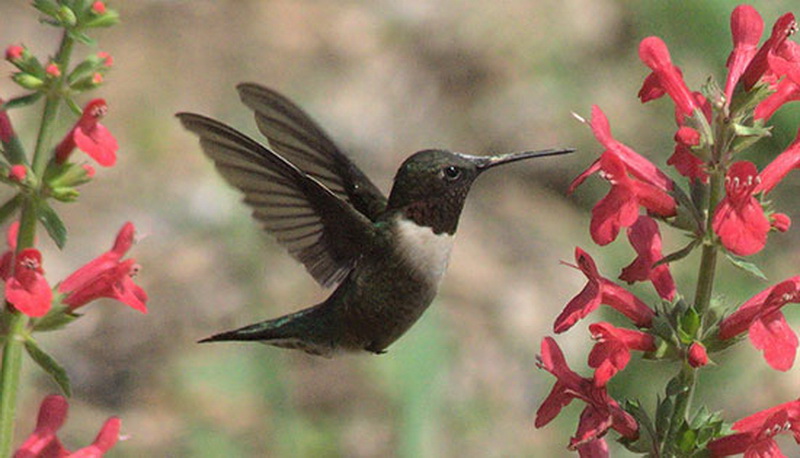
Making your garden welcoming to birds, bees, butterflies and other pollinators is good for your plants and good for the pollinators.
From the aesthetically lovely to the downright spooky (bats, we’re looking at you!), these creatures are vital to our watershed, food systems, and terrestrial wildlife and are worth as much awareness as we can give them.
Did you know that approximately 75% of all flowering plants rely on animal pollinators and over 200,000 species of animals act as pollinators? Of those, about 1,000 are hummingbirds, bats, and small mammals. The rest are insects such as beetles, bees, ants, wasps, butterflies, and moths. In fact, you can thank bats next time you drink a margarita—they pollinate the blue agave from which tequila is made, and thank bees for helping you get going with your morning “cup of joe.”
Lambert’s pollinator stewardship program is an added benefit of our company’s organic garden management philosophy, which guarantees that our clients’ gardens thrive as pollinator-friendly, biodiverse ecosystems. Our approaches include using nontoxic pest management products and applications, complementary planting and maintenance strategies, and designs that are not only remarkable for their intrinsic beauty but also welcoming, functional, and value adding.
Our clients tell us that they appreciate the health and well-being this approach offers their families, and we are fairly certain the birds, butterflies, and bees that feast on natural food sources and healthy garden habitats are happy as well.
The proof is in Lambert’s lead-by-example approach: our clients’ gardens are beautiful, robustly healthy, sustainably irrigated – water use is improved via organic approaches to soil health – and invasive pests, including mosquitos, and plant disease and pathogens are biologically controlled.
For more than three decades, Lambert’s and its tree services arm, Moore Tree Care, have maintained healthy plants and trees without using synthetic fertilizers, pesticides or herbicides. We believe that the coordinated use of organic techniques and naturally-sourced materials can successfully inhibit and/or prevent most all pest, disease and fertility issues in the landscape while providing a lush, biologically diverse environment for bees, birds, bats, and good bugs to thrive.
The ecology of Texas and the location of Dallas on the migratory map for Monarch butterflies and hummingbirds means we have to take special care to protect pollinators and promote sustainable solutions for all living elements in the garden.
And we’ll do that by starting in your own backyard.
Please contact Dan Morgan, Lambert Landscape Company Director of Quality to learn more: dmorgan@lamberts.net
Posted in Cuttings
Leave a comment
Water Management

Being smarter about water will change your garden for good.
Drought conditions in the Dallas and Fort Worth areas have been relieved with the recent rains associated with El Niño, but the long-range outlook for the next decade or more suggests that North Texas will remain on the dry side.
Our current El Niño weather pattern could be replaced this fall by La Niña, in which cooler Pacific temperatures lead to drier conditions in North Texas. In fact, the latest Climate Prediction Center forecast said there could be a 50% chance of La Niña forming between September and November, which could signal a return of drought conditions across Texas.
So what does this mean for Dallas area homeowners concerned about their gardens, lawns and landscape water conservation?
The immediate solution can be found in the ability of digital technology, combined with smarter approaches to planting, to monitor, conserve and use water better.
To ensure that your garden sustains its resilience throughout every season and weather challenge, there are six proactive things we recommend you do:
1) Be strategic and conservative with thirsty plants.
2) Position plants where they will benefit from what they need in terms of ?shade, sun and resources. ?
3) Ensure that plants and trees grow deep roots. ?
4) Mulch to cool the soil and keep it from drying out. ?
5) Nourish with a mixture of minerals, organic matter, and the myriad micro-organisms that support plant life. ?
6) Invest in digital irrigation control technology so that water is measured, monitored, and in sync with ?the precipitation patterns, community mandates, and the needs of your garden. ?
Dallas-Fort Worth tops the nation’s fastest-growth list. As the fourth-largest metro area in the country and the largest in the southern U.S., the rapid increase of new homeowners creates a significant ripple effect in the increased demand for residential landscape water.
Getting your irrigation system in top working order now is a priority that, if left untended, could cost in water use and plant loss. With a few more weeks of climbing temperatures, irrigation crews across town will be stretched thin handling water emergencies. Like air conditioning, ensuring your cooling system works before a heat wave is far better – and cheaper – than waiting for someone to fix it when it’s a triple digit day.
Remember, too much water is no better than too little. When systems run in the middle of a rainstorm or spray water runs off the curb line to an awaiting storm sewer inlet is money going down the drain.
If you haven’t climbed aboard the technology bandwagon, you’re missing a tremendous opportunity. Ease of use, water savings, and reduced water bills are just three of the many benefits realized by our SmartLink wireless irrigation network users.
Call Lambert’s now to find out how weather-based digital technology can add to the heath, vigor and value of your garden, and ease your water bill. Schedule your appointment with our licensed irrigation specialists to ensure water is being delivered where you want it, when you want it, and in just the right amount.
Contact Alex Schuenemann, 214-350-8350
Lamberts.net
Posted in Cuttings
Leave a comment
10 Ways to Make Your Garden More Green

April kicks off Earth Month, a time when the Lambert’s family of gardeners, designers, and nature’s caregivers celebrates our place on the planet by making it more green.
The strategic use of plants, turf, trees, and maintenance practices will make your real estate value stronger, your front and backyards more attractive and fun, and your home garden an environmentally safer place for your family and pets to live.
• Consider choosing high impact, high performing plant material, such as shrubbery, trees and groundcovers for visual interest.
• Take care of your turf areas.
• Select plants that are adapted or native to our area.
• Invest in a strategic water management plan that conserves and optimizes one of our most precious resources.
• Go natural with non-toxic plant health care, fertilizers and pest control applications.
• Invite pollinators and beneficial insects into your garden by including plant food sources they thrive on.
• Prune trees and shrubs regularly for aesthetics and to improve blooming and health.
• Enrich soil with organic mulch and compost.
• Plant low-maintenance, flowering perennials for texture and seasonal beauty.
• And, because we really love trees, plant more of them.
Reap the sustainable environmental benefits of making your corner of the world count. It’s pretty easy. If you live in Dallas Fort Worth, we’ve got your back on green.
Contact Ron Brown, Lambert’s and Moore Tree Business Development @ 214-350-8350.
Posted in Cuttings
Leave a comment
The low-down on the high-risk bug of summer.
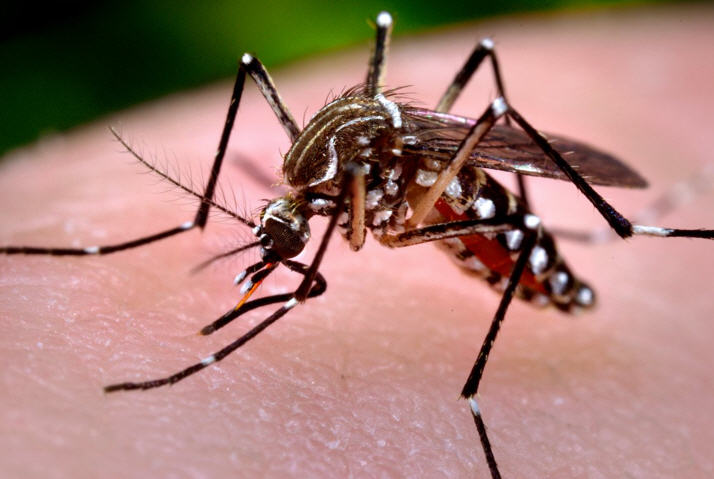
Meet Aedes aegypti, the new unwanted guest in your garden.
Facts:
1. The Aedes aegypti mosquito (photo), which carries the Zika virus, also transmits dengue, yellow fever and chikungunya. It lives only a few weeks, and doesn’t stray more than 100 yards from where it was hatched.
2. The Aedes mosquito is not the same as the Culex mosquito, which carries West Nile.
3. Aedes mosquitoes bite during the day and like all mosquitoes, can breed in less than a teaspoonful of water.
4. The Zika-bearing Aedes is an invasive species, native to tropical and subtropical areas, common in the U.S. in Florida, along the Gulf Coast, and in Hawaii. It is smart and adaptable.
5. The key to controlling the spread of mosquito-borne diseases is to inhibit population growth using localized repellants and reducing places mosquitoes breed.
Preventive measures:
1. Remove all standing water and potential breeding areas.
2. Keep gutters clean and drainage downspouts unclogged.
3. Reroute downspouts or add extensions to carry water away from standing areas.
4. Keep swimming pools cleaned and treated, even when not in use.
5. Walk your property after a rain. If areas aren’t draining well, or there are puddles, re-grade to redirect water and enable evaporation.
6. Aerate ornamental ponds to keep water moving.
7. Stock ponds with mosquito-eating fish.
8. Eliminate any open container in the garden that holds water after a rain.
9. Remove pet water containers, empty saucers under flowerpots and pottery.
10. Control irrigation systems to eliminate wasted water or pooling runoff.
Treatments & Approaches:
Control starts in your own backyard but it’s important for the entire neighborhood to take mosquito control seriously.
Our Products:
Lambert’s uses natural, non-chemical agents and remedies for all its pest control programs, including mosquito mitigation. We believe chemical insecticides and chemical agents are toxic and therefore harmful to people, pets, wildlife, air quality, plant systems, beneficial insects and pollinators.
Our Practice:
We rotate our products to keep the mosquitoes from developing a resistance. The materials we use are safe and derived from all-natural sources.
Weekly spraying combined with the IPM – integrated pest management – approach of using safe larvicides, removing all mosquito breeding-hiding areas, and using permanent or temporary repellant misting systems has proven to be most effective.
Additionally, we employ a number of smart yard management techniques that include certain garden plants that naturally repel mosquitos.
How can I get your service?
Lambert’s mosquito and pest program is an enhancement to our standard organic fertilization service provided to all annual maintenance clients or to any homeowner interested in a non-toxic approach.
Treatment timing:
March-April.
Who can I call for more information?
Contact your Garden Services Manager or Lambert’s Senior Technical Advisor, Dan Morgan, 214-350-8350; dmorgan@lamberts.net
Posted in Cuttings
Leave a comment
Green with envy
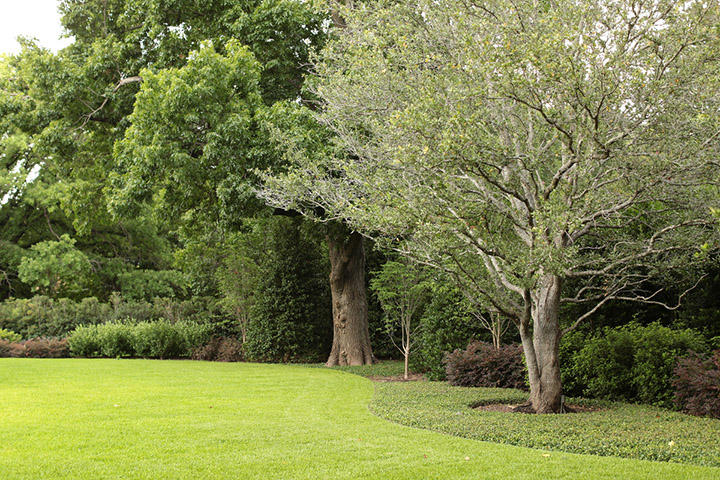
We happen to believe that organic fertilizers are good for your garden and worth your investment. And we believe this because our bio-nutritional programs, chemical-free pest control applications, and the naturally derived products we use to improve soil biology create an optimum and effective growing environment for all your plants and trees. They’re better in the long run, too, because the products we use are non-toxic, family-safe, and cause no harm to the environment, beneficial insects, pets or wildlife.
Trees, in particular, can benefit from root zone fertilization and added micronutrients. This process injects our high quality nutrient solution into the root zone, improving the oxygen content, microbial activity, and nutrient levels in the soil. Shrubs and turf grasses can benefit and thrive from our annual organic fertilizer programs, and treating your lawn with liquid based organic applications will convert your soil into an environment rich with biological activity.
The formulations of Lambert’s plant health care products are custom mixed to give your garden exactly what it needs to flourish. Schedule a site visit with one of our certified arborists or horticulturists and keep your landscape healthy all year long.
For information, contact Certified Arborist Wayne Hitt at: 214-352-6088
March 2016
Posted in Cuttings
Leave a comment
What’s infecting your boxwood?
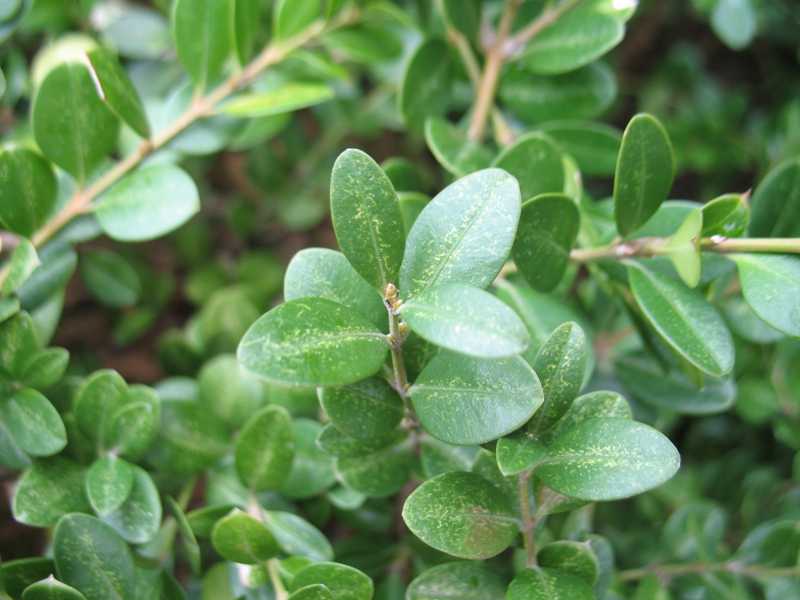
Boxwoods are among our favorite hedge shrub. Although they can be excellent plants, they can fall prey to a number of invasive pests and root diseases.
They’re particularly susceptible to spider mites, microscopic insects with voracious appetites known to feed on leaf surfaces, causing distorted and discolored foliage. These mites overwinter on the undersides of the leaves and hatch in April, completing several generations each year. Left untreated, the population build-up can cause extensive damage.
Getting rid of spider mites is top priority. Lambert’s recommends biological mite control and non-toxic dormant or horticultural oils applied early in the season to kill mite eggs and dormant adults. As the oils work by contact, thorough coverage of the plant surface is required for optimum control.
Lambert’s offers insect and mite control through its plant health care program. Call our Garden Services team to schedule your appointment at 214-850-8350.
Posted in Cuttings
Leave a comment
Beating the bad bug blues.
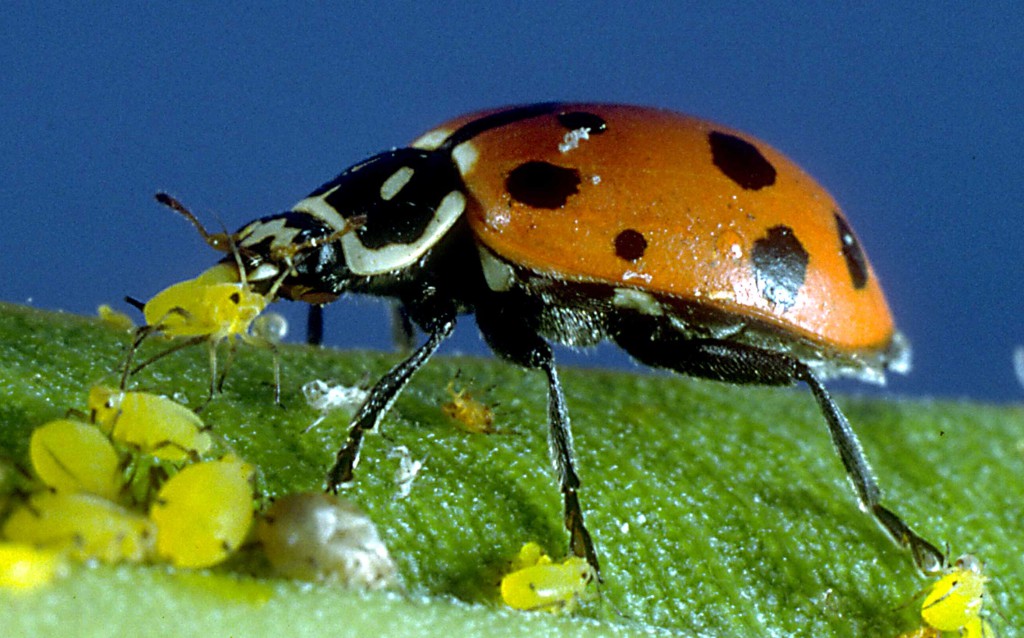
Aphids, whitefly, scale, lace bugs, cutworms, and mealybugs are common warm weather insects that can wreck havoc on your backyard garden. Sucking sap, preying on flowers and foliage, carrying viruses and pathogens, they weaken a host plant’s ability to absorb nutrients and water. Infestations can easily spread if not caught in the bud.
Forget toxic chemicals. Instead, enlist the help of an army of good bugs, beneficial insects that are the bad bugs worst nightmare.
In the case of aphids, sap sucking isn’t the worst of it. The real damage comes from the plant diseases they carry and the sticky honeydew they leave behind. Ladybugs, a popular natural enemy of aphids, will eat well over 5,000 aphids and other soft-bodied pests during their one-year lifetime. Aphid predators and aphid parasites also work well in the battle against aphids, as do green lacewing larvae.
Maintaining a good insect habitat starts by improving the diversity of plants so your landscape is not just strong and healthy, but meets a variety of beneficial insect needs.
Lambert’s environmentally friendly plant health care and biological control program strengthens your garden’s health. Routine applications of organic amendments, compost tea, and nutrient-rich supplements, along with proper watering, are critical to keeping the soil and root systems strong and healthy, and ensuring your garden’s ability to withstand pest infestations and plant disease.
Spring weather will bring with it common warm season insects. Keep their populations down and your plant nutrition up.
For more information on Lambert’s non-toxic plant health care program, contact 214-350-8350.
February 2016
Posted in Cuttings
Leave a comment
The ground hog was right.
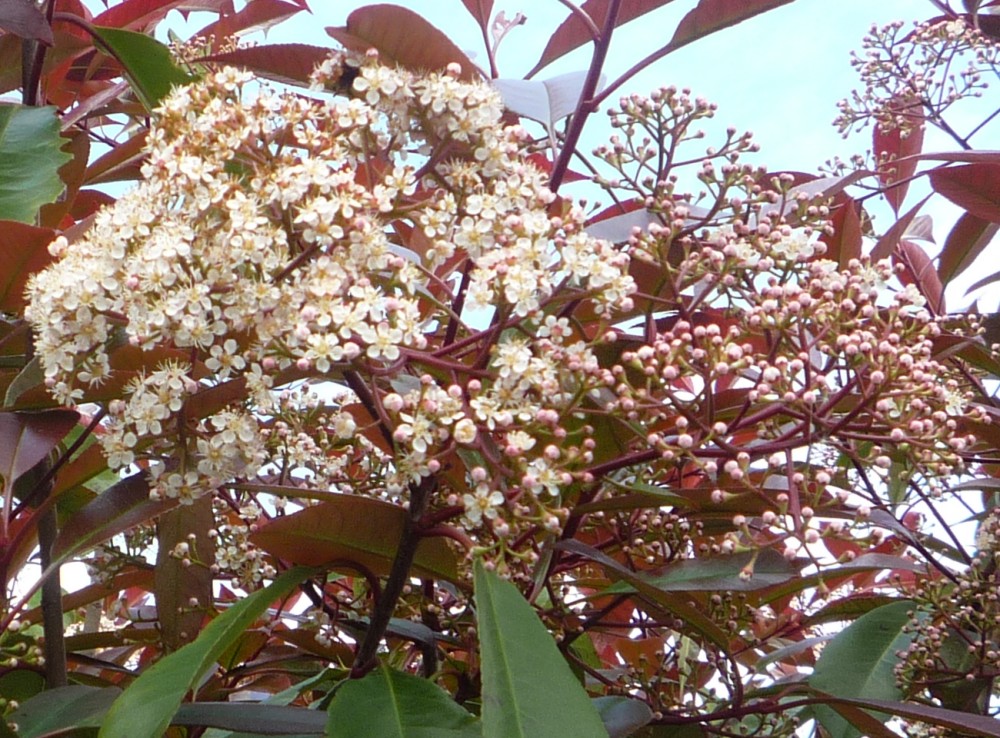 Spring weather is early. For gardens, that means it’s prime time for pruning.
Spring weather is early. For gardens, that means it’s prime time for pruning.
The coldest part of winter has passed and small trees and shrubs are approaching a period of rapid growth. Trimming out old wood, removing weak or diseased parts of the plant, and removing limbs that rub together, for example, will keep the plant healthy and attractive during their upcoming period of peak growth.
Pruning shrubs, such as photinias (photo) and hollies, is beneficial because the plants can be easily shaped without the danger of the new shoot growth being damaged by an unexpected freeze. Another advantage of dormant pruning, or pruning just before growth starts, is that, in the case of deciduous shrubs and trees, it’s easier to make pruning decisions without foliage obscuring the plant’s structure.
What to know:
1) Pruning at the proper time can avoid certain diseases and physiological problems.
2) Shrubs grown for foliage (i.e., photinias and hollies) should be pruned in late winter or early spring.
3) Shrubs that bloom on new growth (roses and crape myrtles) should be pruned before growth begins.
4) Hedges need to be pruned multiple times per season to maintain a manicured look.
5) Deciduous shrubs with multiple stems that can easily become overgrown should receive rejuvenation pruning to bring the plants back to normal size.
6) Pruning improves plant appearance, protects people and property and benefits plant health.
All plants are unique and pruning should be completed with the specific plant in mind.
Schedule your Lambert’s plant health care and pruning appointment now.
Contact Blake Snedaker @ 214-350-8350
February 2016
Posted in Cuttings
Leave a comment
Scale insects threaten backyard trees.
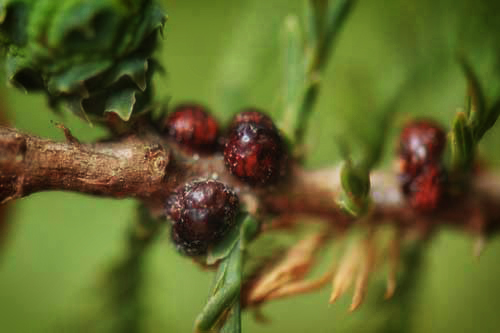 Waxy-looking parasites known as scale insects can suck the life out of your trees and shrubs. Managing them is easy, if tackled early. Wait too long and they can weaken the plant, slow its growth and severely damage the plant’s appearance.
Waxy-looking parasites known as scale insects can suck the life out of your trees and shrubs. Managing them is easy, if tackled early. Wait too long and they can weaken the plant, slow its growth and severely damage the plant’s appearance.
Scale and mites, another sucking insect that causes damage to foliage, are both active in the spring. The best time to treat them is between February and March, before new buds open. A thorough application of non-toxic, horticultural grade dormant oil may be enough to bring about gradual control, while allowing natural enemies of scale and other beneficial insects become more abundant.
Live oaks, red oaks, boxwoods are most at risk. If left untreated, a decline in plant health may become evident.??For more information on plant health care and pest management strategies, contact Wayne Hitt, Certified Arborist. Lambert Landscape Company/Moore Tree @ 214-350-8350
February 2016
Posted in Cuttings
Leave a comment
El Niño’s garden survival kit
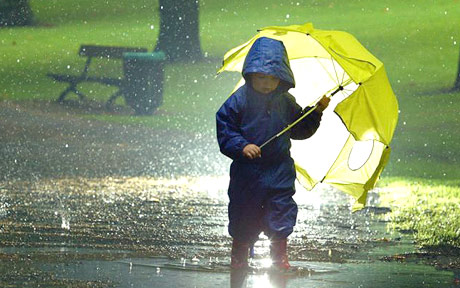
El Niño isn’t just a west coast phenomenon. The weather pattern meteorologists are calling “Godzilla” is predicted to impact a wide stretch of the country including Texas. For our clients in the greater Dallas and Fort Worth area, this most likely means additional bouts of higher-than-average rainfall and temperatures colder than normal at least through February.
The chill combined with wet conditions will impact our gardens, both positively and negatively.
On the positive side, critically important water reservoirs will remain full and subsurface water tables are being recharged. Additionally, the colder weather will help to lessen overwintering pests and provide the needed rest period for many of our garden plants.
However, there may very well be challenges associated with this unusual weather pattern. To help your garden thrive during this El Niño winter, here are eight suggestions from our “garden preparedness” tool kit:
• During hard freeze events, cover tender plants with frost cloths, disconnect hoses, protect faucets and small fountains, turn off sprinklers, etc.
• Prune trees and shrubs, as needed, during their winter dormancy to remove deadwood, eliminate unwanted and/or unhealthy branches. Now is also the time to perform corrective pruning functions for plants that have grown beyond their space or to reestablish desired shapes. Two important reminders; delay pruning spring-flowering shrubs and vines until immediately after flowering and don’t “top” crape myrtle trees.
• Prune evergreen trees such as magnolias and live oaks and large evergreen shrubs to minimize possible ice damage.
• Clean up and remove garden debris to eliminate overwintering areas for pests, insects and diseases. Remember, horticultural oil applications are very effective in controlling those stubborn overwintering insects such as scale. Follow label directions and don’t spray if temperatures are below 45°.
• Topdress beds for improved spring performance by adding organic materials such as compost. Additionally, add a rich layer of organic mulch throughout the garden to help insulate roots against cold temperatures, reduce weed germination, improve soil tilth and fertility and of course – improve the appearance of the garden.
• Continue to supply winter color plantings with granular organic fertilizer and foliar feedings as needed to promote heath, vigor and flower production. Feed trees and large shrubs (especially new, struggling and/or construction impacted plants) via root zone fertilization injections.
• Clean all gutters and landscape drains during and after fall leaf drop. Additionally, note areas of the garden that are slow to drain and consider adding surface and underground drain systems to remove excess water. If sump pumps are already employed in your garden to drain excess rainfall, make sure they are serviced and in top working condition.
• Re-adjust irrigation systems for cooler weather and increased precipitation rates to conserve water, prevent nutrients from being leached out of the soil and to discourage excess water related diseases. Another important reminder however; if rainfall is not expected, irrigate the garden prior to all freeze events to reduce damage. Soil moisture is nature’s root insulator.
Lamberts.net
December 2015
Posted in Cuttings
Leave a comment









